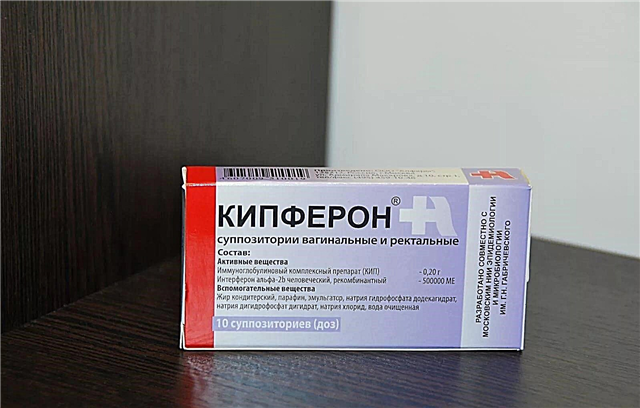
There are no people who do not have a single mole on their body. At the same time, their own formations on the skin of parents are much less concerned than similar manifestations in children.
The fact is that almost all mothers have heard that a mole can cause skin cancer, and therefore lead children to pediatricians with questions about whether cute dots on the skin of babies are really dangerous. The famous doctor and TV presenter Yevgeny Komarovsky has to answer such questions.
What is it and why does it appear?
In medicine, moles are called nevi. Komarovsky calls for distinguishing birthmarks, which are also nevi, but always congenital, from moles, which, in all cases without exception, appear after birth. The formations on the skin in children are different: large and small, protruding above the skin and located at its level. From a medical point of view, a mole is an accumulation of melanocyte cells... These cells can accumulate inside the dermis, in this case they speak of intradermal formation. In epidermal nevus, the accumulation of melanocytes occurs in the outer layer of the skin. The so-called hanging nevi are also distinguished: strongly protruding and very traumatic.
The color can be anything from brown to black and even purple.
If a child has a red mole, then this suggests that the nevus has a different origin - it is an accumulation of vascular growths: angioma.


Most often, nevi appear on the face. And if a newborn practically cannot boast of having moles, then in the first years of life they can appear, and this is not surprising. There is a theory that newborns also have moles, but they are so small that it is not possible to see them without magnifying optical equipment.
The reasons why such formations begin to appear in children are, alas, unknown to the end of science. But There are several predisposing factors that directly affect how many moles there will be and how bright they will be.
- Genetic inheritance... Have you noticed that often mom and daughter have moles in the same place? This is a manifestation of genetic moles, due to which, in fact, nevi were called "RODinki". Information about them is at the DNA level.
- Frequent and prolonged exposure to the sun: UV rays stimulate the production of melanin and as a result new moles appear.
- Hormonal changes and "storms": any period of a person's life associated with hormonal changes (puberty, pregnancy, etc.) is accompanied by the formation of new nevi.
- Radiation damage, viral skin diseases.
In the birthmarks themselves, Yevgeny Komarovsky does not see a reason for worry and excitement.
But moles in a child need to be monitored by adults, who, in turn, must be able to distinguish between normal and safe moles from dangerous nevi.

Dangerous areas of pigmentation
The presence of a nevus is not a danger, says Komarovsky. But you should know that theoretically the appearance of malignant cells in a mole is quite possible, and in this case, a deadly disease - melanoma - can begin.
In order to distinguish normal areas of pigmentation from potentially dangerous ones, Evgeny Olegovich recommends that parents examine their child's moles at least twice a year, fix new ones, evaluate and measure old ones.
There are five criteria by which you can distinguish a safe birthmark from a dangerous one.
- Symmetry... If you mentally draw an imaginary line through the very center of education, then both of its halves should be the same. If the mole is not symmetrical, you should consult your doctor.
- Smoothness of the edge... The edges of a safe nevus are smoothed, even, and distinct. Blurred, pointed edges, uneven - a reason, again, to visit a doctor.
- Evenness of color... It doesn't matter what color the mole is, it is important that it is evenly colored throughout the entire area. The presence of adjacent bright and dull spots within the same nevus is an alarming sign of dangerous pigmentation.
- The size... It is believed that a safe mole should not exceed 6 millimeters in area. If the mole is larger, you definitely need to meet and talk to a doctor.
- Development dynamics... The “behavior” of the nevus plays an important role. If he appeared and does not grow, there is nothing wrong with that. If a mole grows too quickly, you should definitely pay attention to it and make an appointment with your baby to see a doctor.


Even if warning signs are found, says Yevgeny Komarovsky, no one talks about a fatal pathology, we are just talking about the need for more careful observation and control of the formation on the skin.
By the way, melanoma, although considered one of the most dangerous cancer problems, is quite successfully treated, if found early... And this is another strong argument in favor of diagnostics and self-diagnostics.
If the mole is injured
It so happens that children accidentally or through misunderstanding injure moles. If a child ripped off a nevus at his 2 years old or at an older age, parents should not panic and tantrum about this. If the injury is not systematic, says Evgeny Komarovsky, then it is completely harmless for the baby. It is difficult to keep a mobile three-year-old kid who comprehends not only the world around him, but also his own body.
Injury to a mole can be associated with longer bleeding than a regular wound, and this is also completely normal. but systematic stripping and trauma of moles can be dangerous... Hence the conclusion: if a mole is located inconveniently, it is easy to damage it with clothes or something else, it is worth getting rid of it without any doubts.
Evgeny Komarovsky calls on everyone to say goodbye to the myth that moles should never be touched.
If you remove them in the doctor's office, with a laser, then there will be no harm. If you try to do it yourself, go to the healers who perform such operations at home, then, of course, the harm can be much greater than it seems at first glance.


Doctor's advice
Evgeny Komarovsky advises parents to stop panicking and read "scary stories" about sadly ended nevi. First of all, you need to delve into your own pedigree: if there were people in the baby's family who had melanoma, suffered from a giant nevus, etc., then you definitely need to visit genetics to assess the individual risks for the child. Moles in such babies really need more attention.
The following recommendations will also help to avoid problems with moles.
- You are less exposed to the sun, especially during periods of increased solar activity (from noon to 16-17 hours), especially if the child is blond with delicate white skin and blue eyes. At the permitted time, sunbathe with your child, using sunscreen, remember the benefits of a beach umbrella.
- Monitor the dynamics of nevi, even if they are safe.
- Try not to damage the spots, do not hurt.
- If a hair grows from a nevus, it cannot be plucked out by the child; you need to carefully cut it off with scissors, without injuring the skin or violating their integrity.
- For all questionable questions about moles and warts, you need to contact not traditional healers, but to an ordinary doctor.

Dr. Komarovsky tells more about moles in this video.



